Welcome to our free classical music site

Do you write about classical music? Are you a blogger? Want to team up with Classical Connect? Send us a message, let's talk!

Do you write about classical music? Are you a blogger? Want to team up with Classical Connect? Send us a message, let's talk!
August 26, 2013. Arthur Rubinstein plays Chopin’s Polonaise in F-sharp minor. Shortly after Arthur Rubinstein’s death in December of 1982, WFMT, the classical music radio station in Chicago,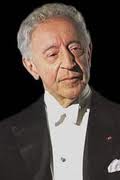 ran a series of programs in which they played recordings made by Rubinstein on different stages of his phenomenal career. This was one of the most fascinating programming features ever produced by WFMT. While Rubinstein’s repertoire was broad, many of the recordings were of Chopin; after all, Rubinstein was, without a doubt, the greatest interpreter of Chopin in the 20th century, and recorded many of his works multiple times, from the late 1920s till well into the 1970s. Recently, on the same WFMT, we caught a recording of Rubinstein playing Chopin’s Polonaise in F-sharp minor, op. 44. Rubinstein "owned" this Polonaise, even though it was part of the repertoire of practically every major pianist of the last century (Vladimir Horowitz was another famous interpreter). We thought that it would be interesting to present recordings of the piece made by Arthur Rubinstein through the years, as it would help us to understand both his mastery and the piece itself. Thanks to YouTube we found three of these: one from the 30s, another made in the 50s, and the last one – in the 1960s.
ran a series of programs in which they played recordings made by Rubinstein on different stages of his phenomenal career. This was one of the most fascinating programming features ever produced by WFMT. While Rubinstein’s repertoire was broad, many of the recordings were of Chopin; after all, Rubinstein was, without a doubt, the greatest interpreter of Chopin in the 20th century, and recorded many of his works multiple times, from the late 1920s till well into the 1970s. Recently, on the same WFMT, we caught a recording of Rubinstein playing Chopin’s Polonaise in F-sharp minor, op. 44. Rubinstein "owned" this Polonaise, even though it was part of the repertoire of practically every major pianist of the last century (Vladimir Horowitz was another famous interpreter). We thought that it would be interesting to present recordings of the piece made by Arthur Rubinstein through the years, as it would help us to understand both his mastery and the piece itself. Thanks to YouTube we found three of these: one from the 30s, another made in the 50s, and the last one – in the 1960s.
The first recording was made in 1935 (hence the relative low quality). Rubinstein was 48 at the time (he was born in the Polish city of Łódź, which back then belonged to the Russian Empire, on January 28, 1887). Just three years earlier, in 1932, Rubinstein, a complete natural who never practiced a lot, decided that he needed to work on his technique and withdrew from the concert scene for several month. He practiced many hours a day, something he had not done either before or after that time.. In this recording he still misses notes but somehow it doesn’t matter (what an innocent time it was: today sound engineers would’ve spliced and diced several takes and made it technically perfect). At 9 minutes and 25 seconds this is the fastest of the three, and for all its brilliance, nuance, and lyricism of the middle part, probably the least impressive of them.
The second recording was made in 1951. Rubinstein, at 64, was in his prime. This recording is much darker than the one he made 16 years earlier and also slower (it runs 10 minutes and 37 seconds). This Polonaise is known as “Tragic” and that’s how Rubinstein plays it; the repeating figure at the end of the first section sounds practically brutal. The central section, a mazurka, also sounds more wistful than in the earlier recording. One of the miraculous qualities of Rubinstein’s playing was the rhythm, very free but absolutely natural, breathing with the development of the piece. The way he moves the final section forward, stately, almost imperiously, is truly a wonder. The quality of this recording is, unfortunately, rather poor. We think that it still is very much worth listening to: piano playing rarely get any better than this.
The third recording was made in 1964 and the quality of the recording is the best of the three. Rubinstein was 77 but still extremely active. One can hear some very minor technical problems but as is so often with Rubinstein, they make no difference (one may recall Hans von Bulow’s complaints that the public ignores Liszt’s “fistfuls of wrong notes” while noticing every single one of his). This is the slowest recording (11 minutes and 15 seconds) but not because of the technical difficulties preventing Rubinstein from playing faster: he needed time to develop a “story.” This time the story is softer than in ’51, but still terrible, poignant and at times heartbreaking. This is probably the deepest interpretation, although many listeners may disagree and “vote” for the ’51 recording.
Rubinstein continued to perform and record for another 12 years, giving his last concert in London in May of 1976. He died on December 20, 1982, aged 95.
PermalinkAugust 19, 2013. Claude Debussy. The great French composer was born on August 22, 1862 in Saint-Germain-en-Laye, not far from Paris. We’ve written about Debussy a number of times in the past (for example here), so to commemorate his birthday this time, we’ll focus on his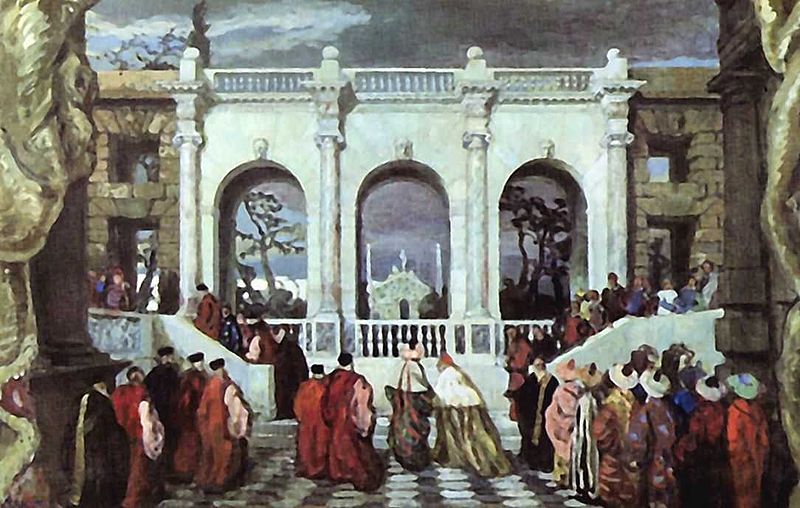 last symphonic composition, a “dance poem” Jeux (Games). Jeux was composed in 1912 for Sergei Diaghilev’s Ballets Russes. The timing of this post is auspicious because right now the National Gallery of Art’s is running an exciting exhibition, “Diaghilev and the Ballets Russes, 1909 – 1929.” It is aptly subtitled “When Art Danced with Music.”
last symphonic composition, a “dance poem” Jeux (Games). Jeux was composed in 1912 for Sergei Diaghilev’s Ballets Russes. The timing of this post is auspicious because right now the National Gallery of Art’s is running an exciting exhibition, “Diaghilev and the Ballets Russes, 1909 – 1929.” It is aptly subtitled “When Art Danced with Music.”
Jeux was not the first Ballets Russes production to use Debussy’s music: earlier in the year, Nihjinsky choreographed and performed in the ballet L'après-midi d'un faune, which was based on a symphonic poem by Debussy called Prélude à l'après-midi d'un faune (Prelude to the Afternoon of a Faun). L'après-midi, written in 1894, was based on a poem by Stéphane Mallarmé. Jeux, on the other hand, was written specifically as a ballet and was choreographed by Vaclav Nijinsky (he and the famous Karsavina danced in the original production). The first libretto called for an erotic encounter between three men. This turned out to be too scandalous even for the scandal-seeking Diagilev, so two of the men were turned into girls, without lessening the erotic charge. For the sets, Diagilev originally approached the painter Alexandre Benois; Benois’s idea was to create a 16th century Venetian holiday. This project fell through and production went to Leon Bakst, who previously created ingenious set designs for L'Après-midi d'un faune, Daphnis et Chloé and several other productions. In Bakst’s sets Jeux turned into a fantasy about the game of tennis and a love triangle. The ballet premiered at the Théâtre des Champs Elysées on May 29, 1913 with Pierre Monteux at the podium. The reception was lukewarm at best. And then, just two weeks later, Ballets Russes staged Stravinsky’s Le Sacre du printemps. The enormous scandal that engulfed that production completely eclipsed Jeux. Even though Jeux continued to be staged sporadically (Pierre Bonnard created some very interesting sets in 1920 for the L'Opera Garnier production), Debussy’s music was labeled unsuccessful and in the subsequent years was half-forgotten; its first commercial recording was made only in 1947. It took the likes of Pierre Boulez to gauge the real importance of the music. The harmonies of Jeux are indeed unusual, even for the contemporary ear. The melodies and tempos flow freely and change very frequently, sometimes as often as every two bars. The poem’s tonal base is also elusive. Pierre Boulez, in his analysis of Jeux, pointed to parallels with Anton Webern’s serialism.
We’ll hear Jeux performed live by the Royal Concertgebouw Orchestra, Christian Thielemann conducting. The picture above is from the unrealized staging of the ballet by Alexandre Benois.
PermalinkAugust 10, 2013. Greene, Sorabji, Ibert. We have an unusual collection of composers whose anniversaries are this week. Maurice Greene, an English Baroque composer, was born on August 12, 1696 in London. As a youngster he was a choirboy at St Paul Cathedral (the new cathedral, designed by Christopher Wren, was consecrated when Greene was one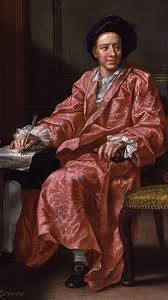 year old). He studied there under Jeremiah Clarke and eventually became the organist of the cathedral. In 1735 he was appointed to the very prestigious position of Master of the King’s Music. Unfortunately for Greene, his active period coincided with the musical reign of George Frideric Handel. Greene’s talent was of a much smaller caliber, but he could be considered the “second composer” of the period, not a small achievement in itself. Greene composed a number of "anthems," a form of Anglican church music. Many of these anthems are still in use today. Here’s is one of his most famous, Hearken Unto Me, Ye Holy Children, composed in 1728. It’s performed by The King's Consort, Robert King conducting.
year old). He studied there under Jeremiah Clarke and eventually became the organist of the cathedral. In 1735 he was appointed to the very prestigious position of Master of the King’s Music. Unfortunately for Greene, his active period coincided with the musical reign of George Frideric Handel. Greene’s talent was of a much smaller caliber, but he could be considered the “second composer” of the period, not a small achievement in itself. Greene composed a number of "anthems," a form of Anglican church music. Many of these anthems are still in use today. Here’s is one of his most famous, Hearken Unto Me, Ye Holy Children, composed in 1728. It’s performed by The King's Consort, Robert King conducting.
A very different English composer, Kaikhosru Shapurji Sorabji was born on August 14, 1892 as Leon Dudley Sorabji into a Parsi family in London (he later changed his name to emphasize his Parsi origins). The difference between the two is not just 300 years;a large part of the history of European music that separates them. Maurice Greene, with all his talents, was quite a conventional composer. There was nothing conventional about Sorabji. He wrote music that lasted for hours, sometimes so technically difficult that it was practically unplayable (his Opus clavicembalisticum (1930), which lasts about four hours, was at that time the longest piece ever written). Largely self-taught, he didn’t follow any discernable musical tradition. He was also a pianist, and much of his music is written for this instrument. Between 1940 and 1944 Sorabji wrote 100 Transcendental Etudes (each individual etude being mercifully short, about three to four minutes). Here’s Etude no. 32, performed by the Swedish pianist Fredrik Ullén. It may not be a remarkable piece but it does demonstrate Sorabji’s skill in sound coloration. Sorabji lived a long life: he died in 1988 at the age of 96.
The French composer Jacques Ibert was a contemporary of Sorabji, but that’s probably the only thing that they have in common. Whereas “ponderous” may be the word applied to much of Sorabji’s opus, "lighthearted" is how Ibert’s music is described best. Ibert was born in Paris on August 15, 1890. He started taking piano and violin lessons at the age of four. He went to study at the Paris Conservatory, but World War I put a temporary end to his studies. After the War, in which Ibert served as a naval officer, he returned to the studies and won the prestigious Prix de Rome (some years later Ibert became the director of Académie de France at the Villa Medici in Rome). Ibert didn’t belong to any particular music school. He wrote operas (most of them quite short), a ballet, a number of orchestral pieces, a lot of piano and chamber music and wonderful songs. He also wrote music for movies and theater. Here is Ibert’s Divertissement for chamber orchestra, written in 1929-1930. It’s performed by Orchestre Des Concert Lamoureux, Yutaka Sado conducting.Permalink
July 5, 2013. Guillaume Dufay. The most famous Franco-Flemish composer of the mid-15th century, Guillaume Dufay was born in 1397, probably on or around July 5. Exactly were he was born is not clear: either around Cambrai, in what is now Northern France, or in Beersel, outside of Brussels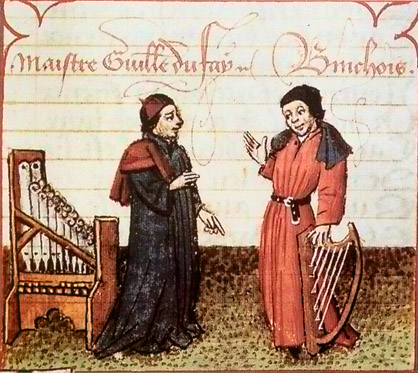 . Dufay is often described as the last composer of the medieval period and the first composer of the Renaissance. He was an illegitimate child of a local priest (it appears that not just popes and cardinals misbehaved in those days, but regular clerics too). His uncle was a canon at the cathedral of Cambrai, and young Guillaume became a chorister there. His talents were noticed early on and he was given formal musical training. In 1420 Dufay moved to Rimini to serve at the palace of Carlo Malatesta, a famous condottiero. There he wrote both church music (masses and motets), and secular, in the form of ballades and rondeaux. The motet Apostolo glorioso was likely written during Dufay’s time in Rimini. It’s sung by the Huelgas Ensemble, Paul Van Nevel conducting (here). Dufay stayed in Malatesta’s service till 1424 and then returned to France, to Cambrai or maybe Laon, whose wine and ladies he celebrated in the rondeau Adieu Ces Bons Vins de Lannoys (Farewell, you fine wines of Laon, farewell ladies, farewell townsfolk, farewell she whom I loved so much, farewell all pleasing joy, farewell all bawdy companions). It’s performed here by The Gothic Voices, with Christopher Page, their artistic director, conducting. In 1426 Dufay went back to Italy, this time into the service of a French Cardinal Louis Aleman, who at that time was a papal legate in Bologna. Two years later Dufay moved to Rome and became a member of the papal choir. He remained in Rome till 1433; by then he was famous all around Europe. He left Rome to join the court of Amédée VIII, the duke of Savoy. In 1434 the duke’s son Louis married Ann of Cyprus, and many guests were invited to the wedding. One of them was the Philip III, the duke of Burgundy. In duke’s retinue was Gilles Binchois, another famous composer. Apparently Dufay and Binchois met on that occasion, at least according to Martin le Franc, the same le Franc who coined the term La Contenance Angloise to describe the style of John Dunstaple, another famous contemporary. The picture above is of Guillaume Dufay (on the left) and Gilles Binchois.
. Dufay is often described as the last composer of the medieval period and the first composer of the Renaissance. He was an illegitimate child of a local priest (it appears that not just popes and cardinals misbehaved in those days, but regular clerics too). His uncle was a canon at the cathedral of Cambrai, and young Guillaume became a chorister there. His talents were noticed early on and he was given formal musical training. In 1420 Dufay moved to Rimini to serve at the palace of Carlo Malatesta, a famous condottiero. There he wrote both church music (masses and motets), and secular, in the form of ballades and rondeaux. The motet Apostolo glorioso was likely written during Dufay’s time in Rimini. It’s sung by the Huelgas Ensemble, Paul Van Nevel conducting (here). Dufay stayed in Malatesta’s service till 1424 and then returned to France, to Cambrai or maybe Laon, whose wine and ladies he celebrated in the rondeau Adieu Ces Bons Vins de Lannoys (Farewell, you fine wines of Laon, farewell ladies, farewell townsfolk, farewell she whom I loved so much, farewell all pleasing joy, farewell all bawdy companions). It’s performed here by The Gothic Voices, with Christopher Page, their artistic director, conducting. In 1426 Dufay went back to Italy, this time into the service of a French Cardinal Louis Aleman, who at that time was a papal legate in Bologna. Two years later Dufay moved to Rome and became a member of the papal choir. He remained in Rome till 1433; by then he was famous all around Europe. He left Rome to join the court of Amédée VIII, the duke of Savoy. In 1434 the duke’s son Louis married Ann of Cyprus, and many guests were invited to the wedding. One of them was the Philip III, the duke of Burgundy. In duke’s retinue was Gilles Binchois, another famous composer. Apparently Dufay and Binchois met on that occasion, at least according to Martin le Franc, the same le Franc who coined the term La Contenance Angloise to describe the style of John Dunstaple, another famous contemporary. The picture above is of Guillaume Dufay (on the left) and Gilles Binchois.
In 1435 Dufay returned to the papal court, except this time not in Rome but in Florence, where Pope Eugene IV was driven to by an insurrection in Rome. It was in Florence that Dufay composed one of his most famous motets, Nuper Rosarum Flores ("Recently Flowers of Roses"). It was written for the consecration of the Florence cathedral, Santa Maria del Fiore (Saint Mary of the Flowers) on March 25, 1436. The great architect Filippo Brunelleschi just completed the magnificent cupola, and the Pope himself presided over the festivities. Nuper Rosarum Flores is performed by the Huelgas Ensemble under the baton Paul Van Nevel (here).
Dufay lived a long life (he died in 1474), during which he composed many motets, chants, and masses, among them one on the tune of L'homme armé, a very popular song of the time. Whether he composed the tune itself is not clear, but his was the first mass to be based on it. Forty other settings exist, among them masses composed by Josquin des Prez, Cristóbal de Morales, and Giovanni Pierluigi da Palestrina. We’ll come back to this unique song at a later time.
PermalinkJuly 29, 2013. From recent uploads: George Vatchnadze and Ran Jia. Georgian-American pianist George Vatchnadze is an established artist recognized as one of the most interesting musicians of his generation. He has appeared with orchestras and in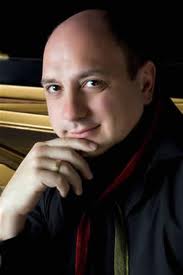 recitals throughout the United States, Canada, Great Britain, Netherlands, Italy, Israel, Russia, and other countries. He has performed at the Hollywood Bowl, Ravinia, Stresa, and Rotterdam Philharmonic’s Gergiev Festivals, and other venues. In 1997 Mr. Vatchnadze made a sensational recital debut at the prestigious Edinburgh International Music Festival and received the “Herald Angel Award” presented by the Scottish Herald newspaper. In 1999 Mr. Vatchnadze made his New York recital debut at the Alice Tully Hall. Critic and writer Faubion Bowers wrote in American Record Guide: “Vatchnadze is a consummate artist, now at the height of his musical and intellectual powers. He can do absolutely anything he wants at the piano. He commands delicate pianissimi, massive diapasons and everything in between”. In 20111, Mr. Vatchnadze joined the DePaul faculty as Associate Professor of Piano. Mr. Vatchnadze plays Robert Schumann’s Kinderszenen (Scenes from Childhood), Op. 15. It was written in 1838, a difficult period in Schumann’s life: he was separated from his fiancée Clara Wieck, all the while trying to convince her stubborn father to allow them to marry. Kinderszenen is a collection of 13 seemingly simple but emotionally complex pieces. Mr. Vatchnadze’s performance is romantic but probing, a rare but highly satisfying combination. You can listen to it here.
recitals throughout the United States, Canada, Great Britain, Netherlands, Italy, Israel, Russia, and other countries. He has performed at the Hollywood Bowl, Ravinia, Stresa, and Rotterdam Philharmonic’s Gergiev Festivals, and other venues. In 1997 Mr. Vatchnadze made a sensational recital debut at the prestigious Edinburgh International Music Festival and received the “Herald Angel Award” presented by the Scottish Herald newspaper. In 1999 Mr. Vatchnadze made his New York recital debut at the Alice Tully Hall. Critic and writer Faubion Bowers wrote in American Record Guide: “Vatchnadze is a consummate artist, now at the height of his musical and intellectual powers. He can do absolutely anything he wants at the piano. He commands delicate pianissimi, massive diapasons and everything in between”. In 20111, Mr. Vatchnadze joined the DePaul faculty as Associate Professor of Piano. Mr. Vatchnadze plays Robert Schumann’s Kinderszenen (Scenes from Childhood), Op. 15. It was written in 1838, a difficult period in Schumann’s life: he was separated from his fiancée Clara Wieck, all the while trying to convince her stubborn father to allow them to marry. Kinderszenen is a collection of 13 seemingly simple but emotionally complex pieces. Mr. Vatchnadze’s performance is romantic but probing, a rare but highly satisfying combination. You can listen to it here.
The 24-year old pianist Ran Jia is regarded by many as a musician with unusual natural abilities. Born in Chengdu, the capital of the Chinese province of Sichuan, Ms. Jia began studying piano at the age of three and made her solo debut in 1995, at the age of six. In November 2005, she made her debut at Lincoln Center’s Alice Tully Hall performing Mozart’s Piano Concerto No. 21 in C major with the Orchestra of St. Luke’s. In the summer of 2008 Ms. Jia made a European recital debut at the Klavierfestival Ruhr playing two Schubert sonatas to great acclaim. In 2009 Ms. Jia made her Vancouver Symphony Orchestra subscription debut, performing Mozart’s Piano Concerto No.12. The following summer she toured the southern cities of China, performing Camille Saint-Saëns’s Concerto No. 2 with the Shenzhen Symphony Orchestra. In the 2011-12 seasons, Ms. Jia appeared at the Miami International Piano Festival, the Gilmore International Keyboard Festival and in recital in Dusseldorf, Munich, and Ludwigshafen. Ran Jia studied with Gary Graffman at the Curtis Institute of Music in Philadelphia. Ms. Jia is currently enrolled at the Music Academy in Cologne, studying under Nina Tichman. Ms. Jia performs Franz Schubert’s Piano Sonata No. 18 in G major, D. 894. The sonata was completed in 1826 and published a year later; it’s the last one to be published during Schubert’s lifetime. The English pianist Imogen Cooper called D. 894 Schubert’s “completely serene” sonata, and Ms. Jia gives every theme enough space and time to fully develop (here).
In November 2005, she made her debut at Lincoln Center’s Alice Tully Hall performing Mozart’s Piano Concerto No. 21 in C major with the Orchestra of St. Luke’s. In the summer of 2008 Ms. Jia made a European recital debut at the Klavierfestival Ruhr playing two Schubert sonatas to great acclaim. In 2009 Ms. Jia made her Vancouver Symphony Orchestra subscription debut, performing Mozart’s Piano Concerto No.12. The following summer she toured the southern cities of China, performing Camille Saint-Saëns’s Concerto No. 2 with the Shenzhen Symphony Orchestra. In the 2011-12 seasons, Ms. Jia appeared at the Miami International Piano Festival, the Gilmore International Keyboard Festival and in recital in Dusseldorf, Munich, and Ludwigshafen. Ran Jia studied with Gary Graffman at the Curtis Institute of Music in Philadelphia. Ms. Jia is currently enrolled at the Music Academy in Cologne, studying under Nina Tichman. Ms. Jia performs Franz Schubert’s Piano Sonata No. 18 in G major, D. 894. The sonata was completed in 1826 and published a year later; it’s the last one to be published during Schubert’s lifetime. The English pianist Imogen Cooper called D. 894 Schubert’s “completely serene” sonata, and Ms. Jia gives every theme enough space and time to fully develop (here).
PermalinkJuly 22, 2013. Enrique Granados and Cristóbal de Morales. Enrique Granados, one of the most important Spanish composer’s of the new era, was born on July 27, 1867 in Lérida, Catalonia. We wrote, rather extensively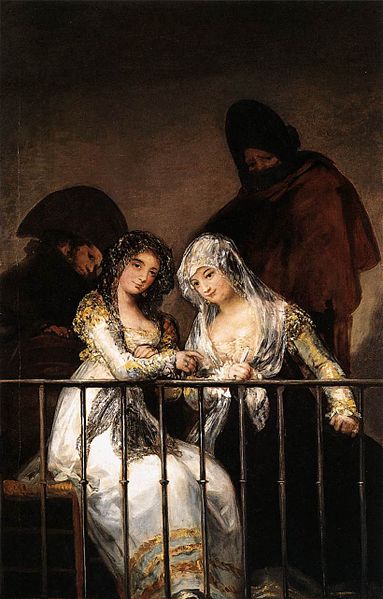 , about Granados a year ago, so to celebrate his birthday we’ll present a couple of pieces that were uploaded since then. Both come from Goyescas, Op. 11, a suite inspired by the painting of Francisco Goya and probably Granados’s most significant (and difficult) composition. First, El amor y la muerte (Balada) or Ballad of Love and Death, the fifth piece of the suite. It is performed by Ruti Abramovitch (here). El pelele (The Straw Man) was written in 1914, later than the original six pieces of Goyescas. Granados gave it a subtitle Escena goyesca and it’s usually performed as part of the suite. Here it is played by the Spanish pianist Carlos Gallardo.
, about Granados a year ago, so to celebrate his birthday we’ll present a couple of pieces that were uploaded since then. Both come from Goyescas, Op. 11, a suite inspired by the painting of Francisco Goya and probably Granados’s most significant (and difficult) composition. First, El amor y la muerte (Balada) or Ballad of Love and Death, the fifth piece of the suite. It is performed by Ruti Abramovitch (here). El pelele (The Straw Man) was written in 1914, later than the original six pieces of Goyescas. Granados gave it a subtitle Escena goyesca and it’s usually performed as part of the suite. Here it is played by the Spanish pianist Carlos Gallardo.
Cristóbal de Morales was at least as important to the development of the Spanish Renaissance music as Granados was to the modern era. Morales was born in Seville around 1500. He was trained as a choirboy in the magnificent (and then just completed) Cathedral of the city. Around 1526 he became the choirmaster at the Cathedral of Ávila, and later, from 1529 to 1532, held the same position in Plasencia. Apparently, he was an outstanding singer. At least since the Spanish Pope Alexander VI (born Rodrigo Borgia), Rome was partial to Spanish singers, and in 1535 the Pope Paul III made sure that Morales was accepted at the papal choir. While in Rome, where he stayed till 1545, he also worked as an organist. We don’t know when Morales started composing, but he did a lot of it while in Rome (a compendium of his work was published in 1544). He also stayed in touch with other composers working in the city. Morales became quite famous while still in Italy. That didn’t help him in securing a job in Rome, however, and in 1545 Morales moved back to Spain to become the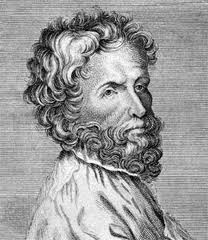 choirmaster at the Cathedral of Toledo. In Spain he was considered the most important composer of the time. Even later, in the 18th century, Andrea Adami da Bolsena, the famous castrato and music historian, declared him the most significant composer between Josquin des Prez and Palestrina. Morales died in 1553, probably in October, either in Malaga or in Marchena, near Seville.
choirmaster at the Cathedral of Toledo. In Spain he was considered the most important composer of the time. Even later, in the 18th century, Andrea Adami da Bolsena, the famous castrato and music historian, declared him the most significant composer between Josquin des Prez and Palestrina. Morales died in 1553, probably in October, either in Malaga or in Marchena, near Seville.
Morales’s works influenced Palestrina, who based one of his masses on a motet by Morales. He also affected another great Spaniard, Tomás Luis de Victoria. Among Morales’s extant work are masses, motets and magnificats. Here is a wonderful motet, Parce mihi, Domine, it’s performed by the Monteverdi Choir, John Eliot Gardiner conducting. And here are two parts, Introitus and Kyrie from his Missa pro defunctis a 5 (a Requiem Mass), published in Missarum Liber Secundus in 1544, while he was still in Rome. They are performed by the Spanish ensemble Musica Ficta, Raúl Mallavibarrena conducting.
Permalink